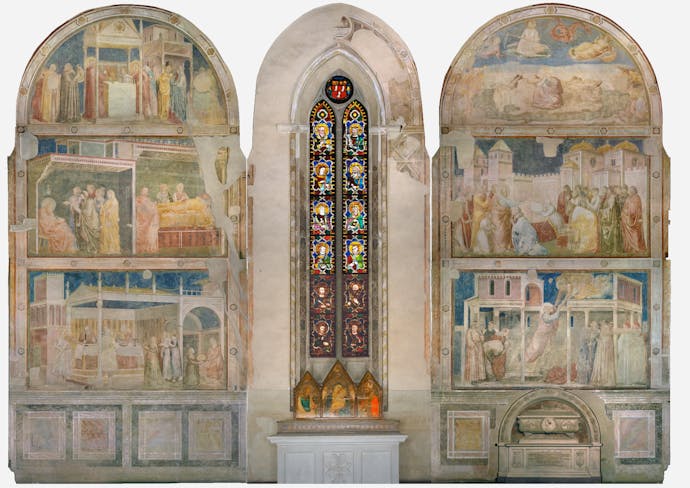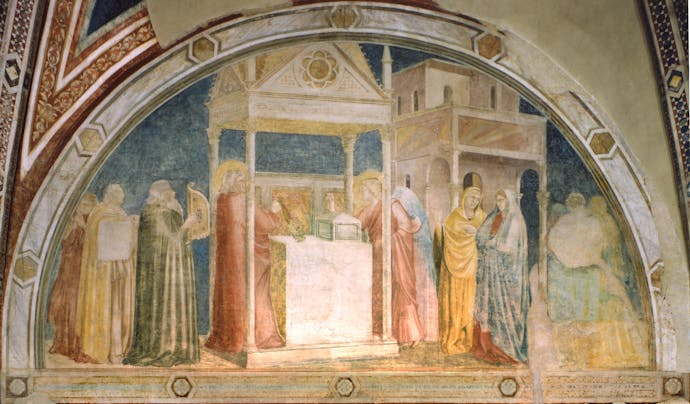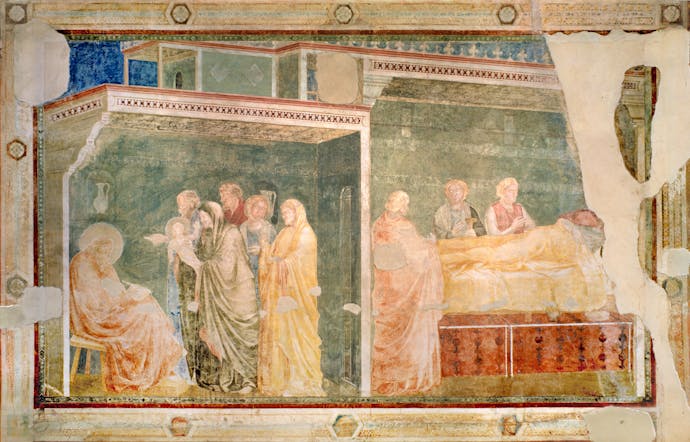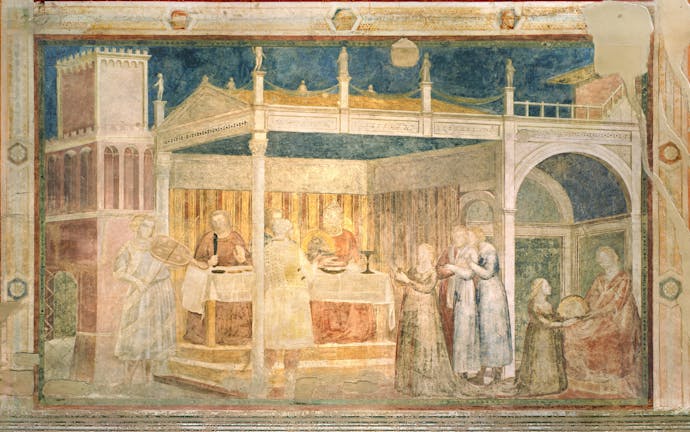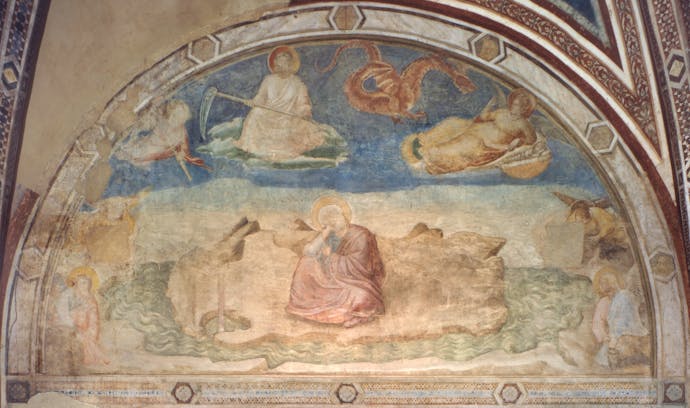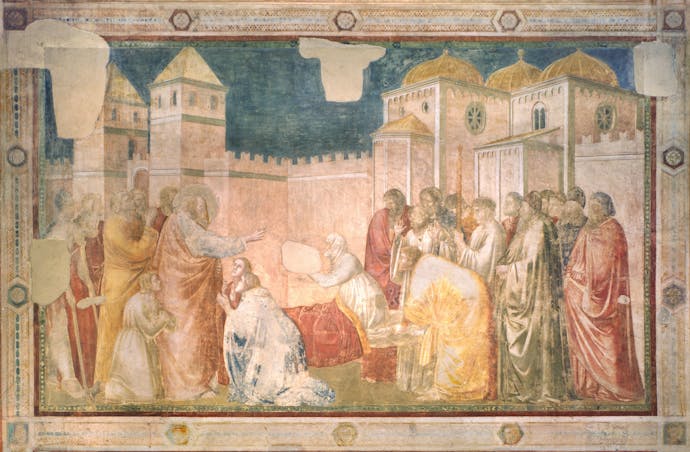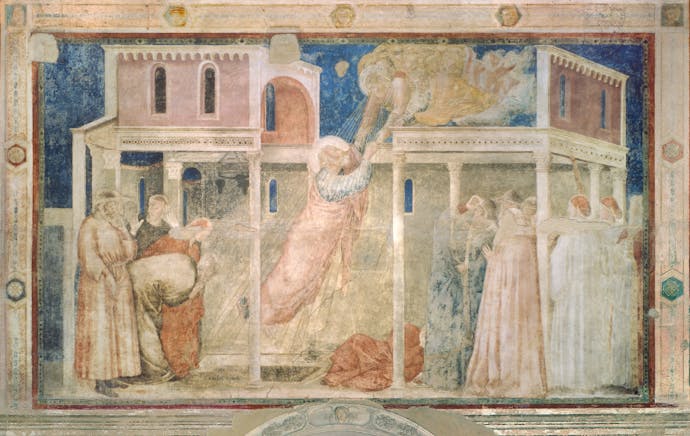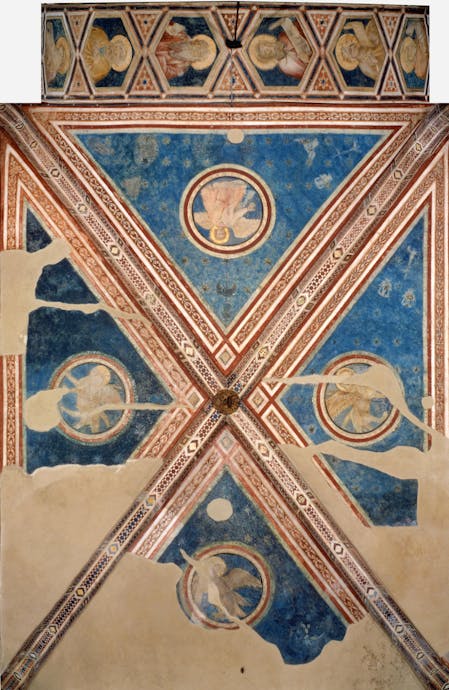Giotto
Artist: Giotto di Bondone (Colle di Vespignano, Mugello c. 1267 - Florence 1337) and workshop
Title: Stories of St. John the baptist and St. John the Evangelist
Left wall: Stories of St. John the Baptist; Annunciation to Zacharias in the temple; Birth of St. John the Baptist, Zacharias, struck dumb, writes his son's name; The feast of Herod; Salome presents Herodias with the head of St. John the Baptist
Right wall: Stories of St. John the Evangelist; The vision of the Apocalypse of St. John the Evangelist in exile on the island of Patmos; The raising of Drusiana; Death and ascension into heaven of St. John the Evangelist
Imitation marble panels; ornamental bands with figures in medallions
Back wall: The Mystic Lamb Vault: Symbols of the Evangelists in medallions; ornamental band with geometrical decoration;
Archivolt: Eight busts of prophets in medallions
Date: c. 1310-1311
Material and tecnique: dry mural
Position: basilica of Santa Croce, right transept, Peruzzi Chapel
The fact that the murals were painted almost entirely on dry plaster rather than using the fresco technique has jeopardised a clarity further damaged by successive whitewashing and restoration over the centuries. In fact, that may be one of the reasons why their dating is disputed. Most scholars argue that they were painted before those in the Bardi Chapel, dating them to the early 1320s, while others consider them to be later.
We may owe the choice of saints depicted to the patron who commissioned the murals, but also to the fact that the feast of the ascension of the Evangelist and the birth of the Baptist coincide – a coincidence highlighted in Jacobus de Varagine's Golden Legend, the inspiration for much of the iconography.
Given that the chapel is relatively narrow, Giotto arranges the perspective structure of his compositions around a vanishing point seen from the entrance arch, his scenes presenting complex and meticulously devised architectural backgrounds.
The figures, whose drapery is reminiscent of the classical world, acquire a monumental quality through their solemn, dramatic gestures: see, for example, the gesture rich in expressive power and sculptural vigour of the Evangelist's hand as he resuscitates Drusiana.
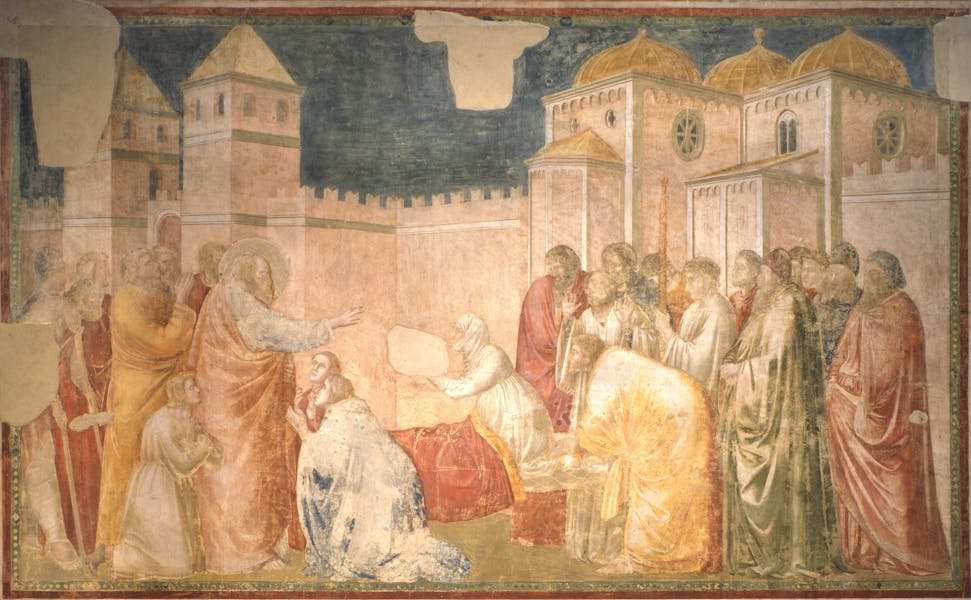
Giotto, Resurrection of Drusiana, scene from the Stories of St. John the Baptist and of St. John the Evangelist, c. 1310–11 . Basilica of Santa Croce, south transept, Peruzzi Chapel
The artist's determination to capture reality faithfully shines through in every scene, for instance in the meticulous care with which he defines the hand-held violetta in the Banquet, the jugs in a niche in the wall or the chests surrounding the bed in the Birth of John the Baptist. Equally innovative is his "bird's eye view" of the landscape in the lunette depicting the Vision of the Apocalypse, with an island emerging from a choppy sea.
The ornamental friezes separating the scenes, with their geometrical decorative motifs, contain ten hexagons with small heads which may portray members of the Peruzzi family. If so, they are an early example of the depiction of patrons not kneeling before a holy personage but shown in independent portraits.
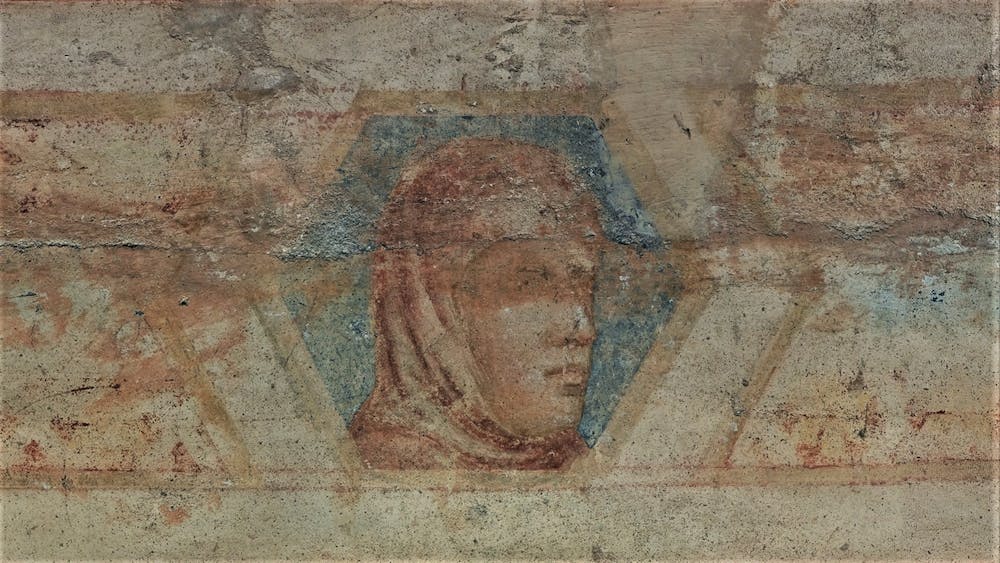
Giotto, Patron, detail of the Stories of St. John the Baptist and of St. John the Evangelist, c. 1310–11. Basilica of Santa Croce, south transept, Peruzzi Chapel
